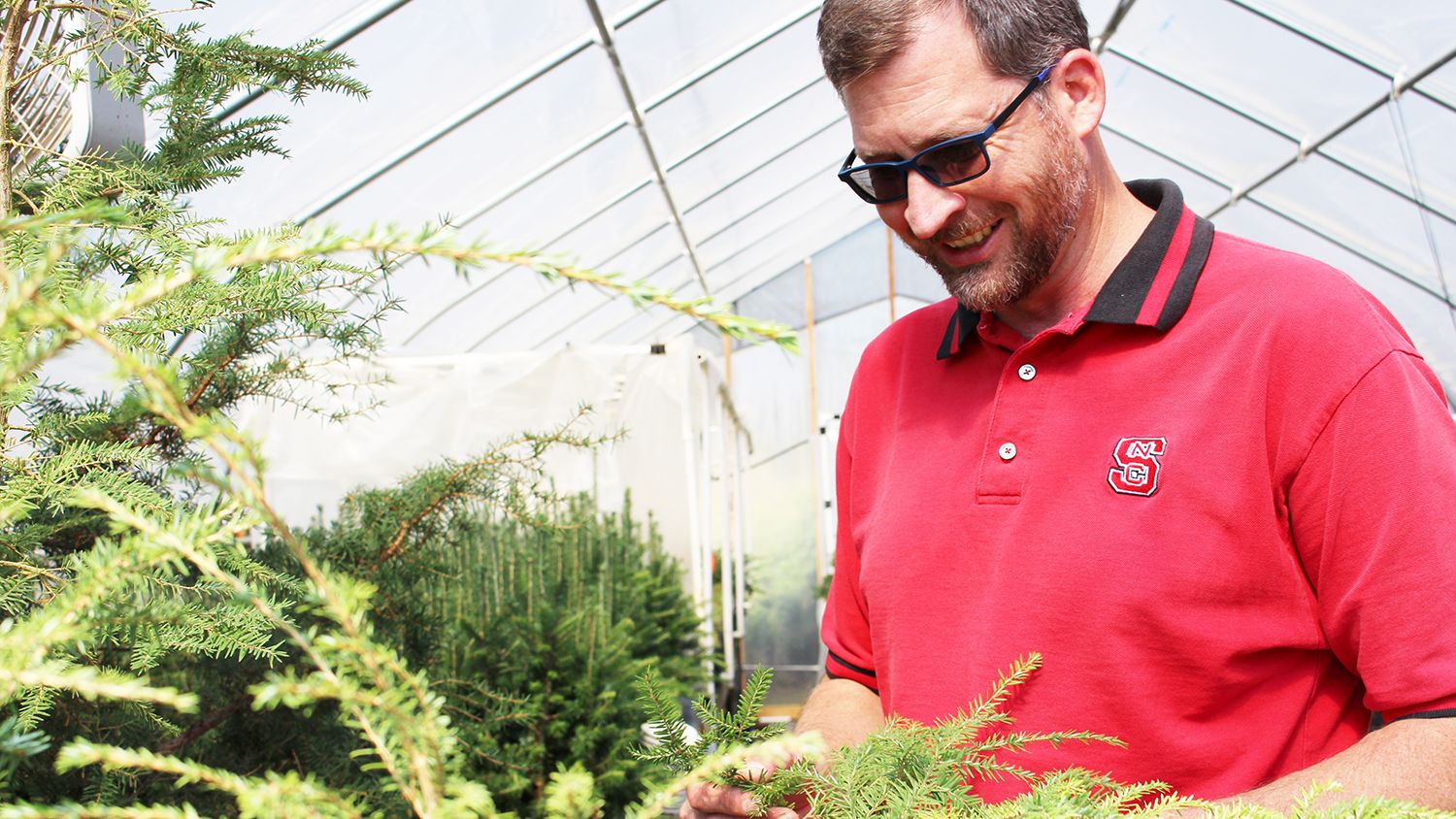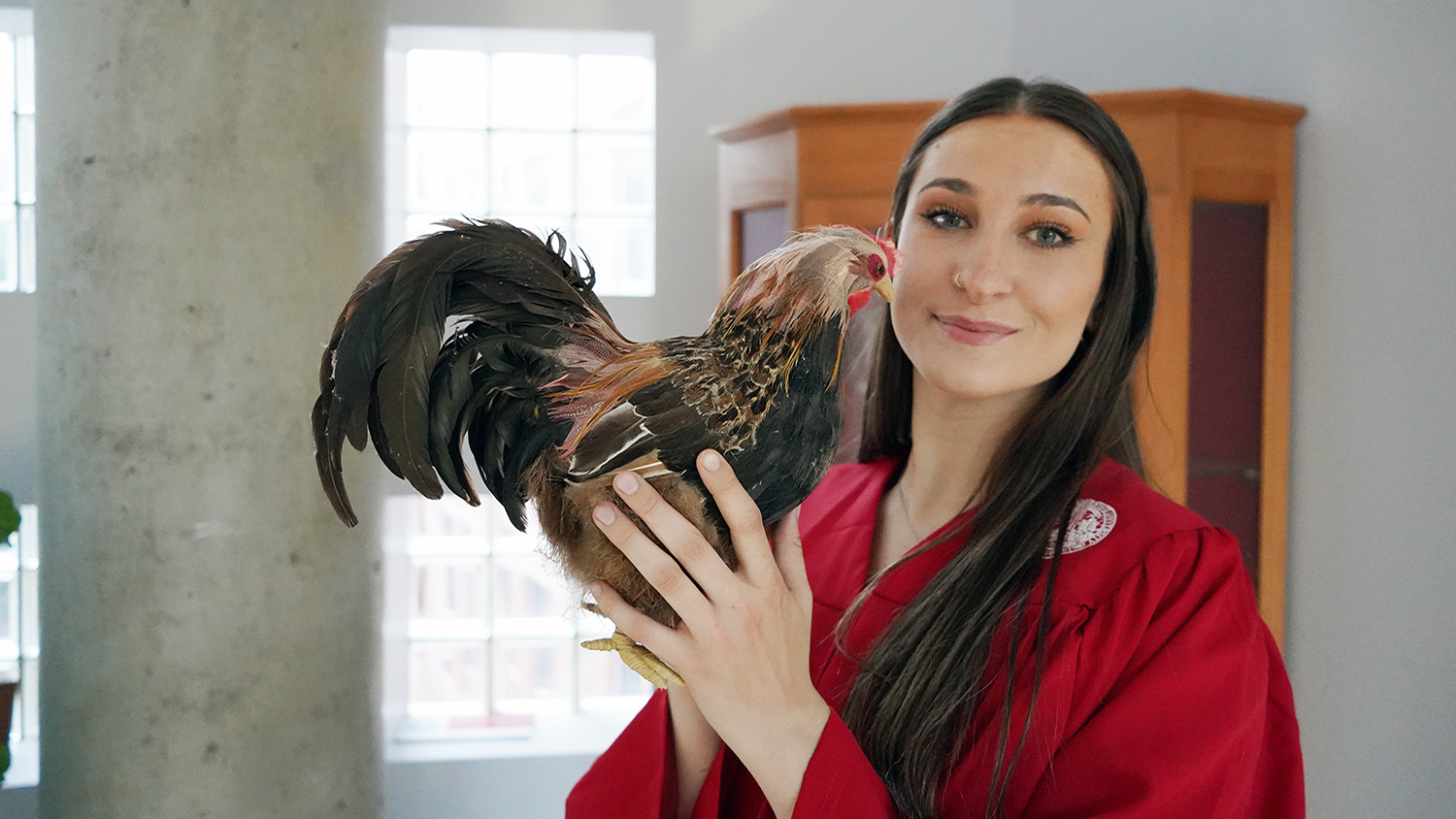Far from Being Futile, Resistance is This Tree Breeder’s Goal

At the Mountain Research Station in Waynesville, N.C., postdoctoral researcher Ben Smith patiently tends thousands of evergreen seedlings. His goal: to find at least a few that will tolerate two tiny but troublesome pests.
Part of NC State University’s Department of Entomology and Plant Pathology, Smith works for the nonprofit Forest Restoration Alliance. His experiments have implications not only for important area industries but also for the fate of forests threatened by invasive insects.
The balsam woolly adelgid – no bigger than a flake of pepper – kills mature Fraser firs that support natural communities on some of the state’s highest peaks, and it disfigures younger ones that dominate North Carolina’s Christmas tree crop.
The BWA’s close cousin, the hemlock woolly adelgid, also has taken an economic and ecological toll, devastated many of North Carolina’s forests of eastern and Carolina hemlock. The majestic trees are a foundational species, considered vital to the mountain ecosystems they call home. Before the HWA’s presence led to quarantines, they also were important to the landscape and nursery industries.
Smith’s job is to select and breed trees able to resist the adelgids’ attacks. With the hemlocks, he takes two approaches.
“The first approach is to find natural resistance and exploit it,” he said. That means he and his colleagues search the mountains for hemlocks that thrive where others have succumbed to the insects.
From those trees, he takes cuttings that he plants in soil, hoping that they’ll grow into trees that produce offspring that resist the adelgids’ attacks. It’s an arduous process that can take decades.
“The second approach is similar to what the American Chestnut Foundation has done to help restore chestnut trees. They haven’t been able to find natural resistance, but they’ve had success with a hybridization, or backcrossing, program,” he said.
This means that Smith crosses native firs and hemlocks with exotic species that resist the insects. The hope is that the offspring will resist the adelgids, too.
Smith’s efforts spring from the groundwork done by forest entomologist and NC State professor emeritus Fred Hain, who founded the Forest Restoration Alliance. The alliance includes collaborating researchers from universities, the National Arboretum and the U.S. Forest Service.
For the alliance, years of work are beginning to yield results. Earlier this year, Smith was able to enter a new phase of screening for Fraser firs resistant to the BWA. Having successfully grafted Fraser fir rootstocks to cuttings taken from trees representing what he calls the “the best of the best” genetics from a seed orchard in Ashe County, Smith has infested the trees with the BWA and begun observing and measuring their response.
In 2017, he hopes to begin screening for resistance in hemlocks.
“Time will tell,” he said, “but the ultimate goal is to restore former hemlock and Fraser fir stands — to have trees that are in the ground, growing, that have a good shot of being there forever.”
This post was originally published in College of Agriculture and Life Sciences News.


